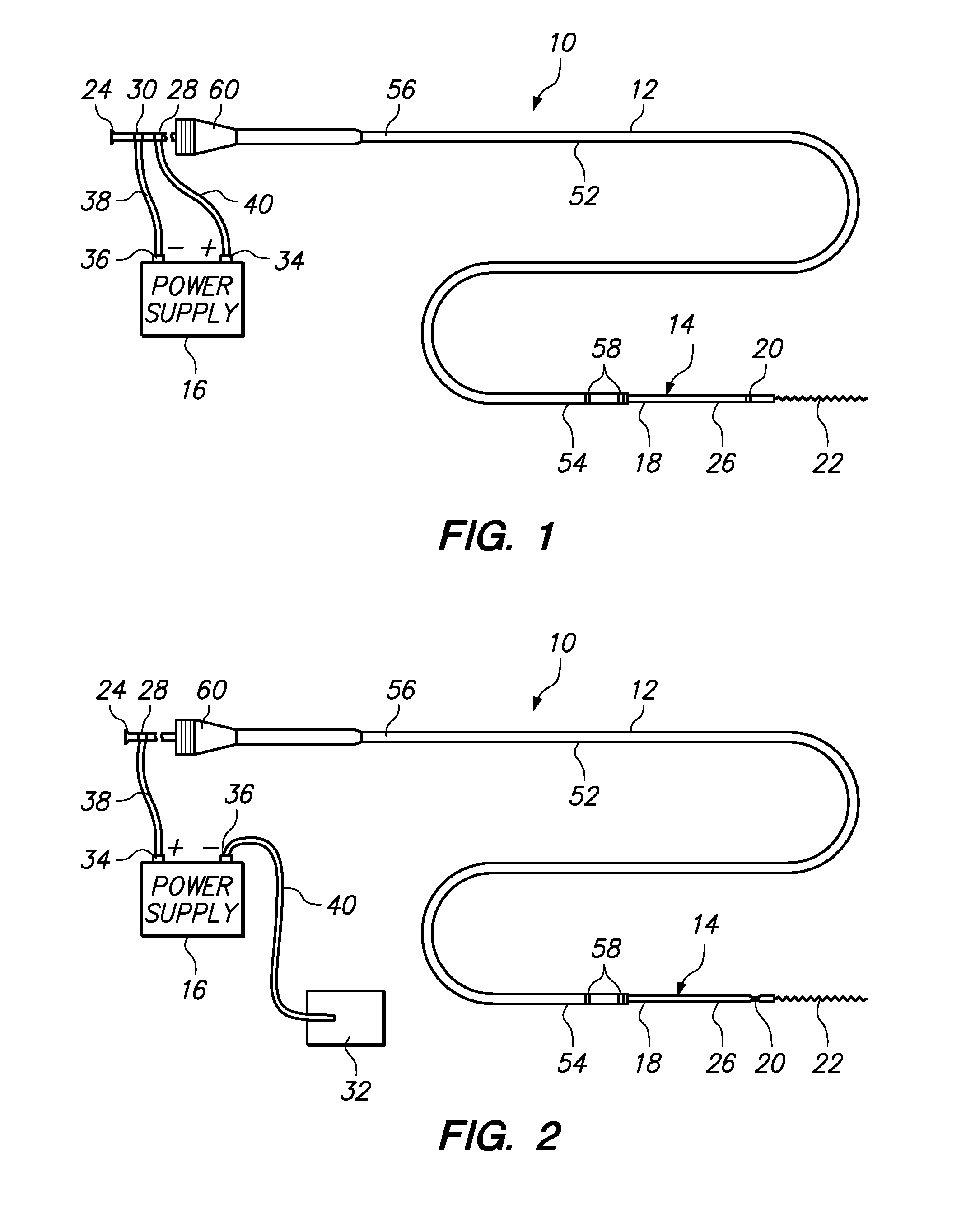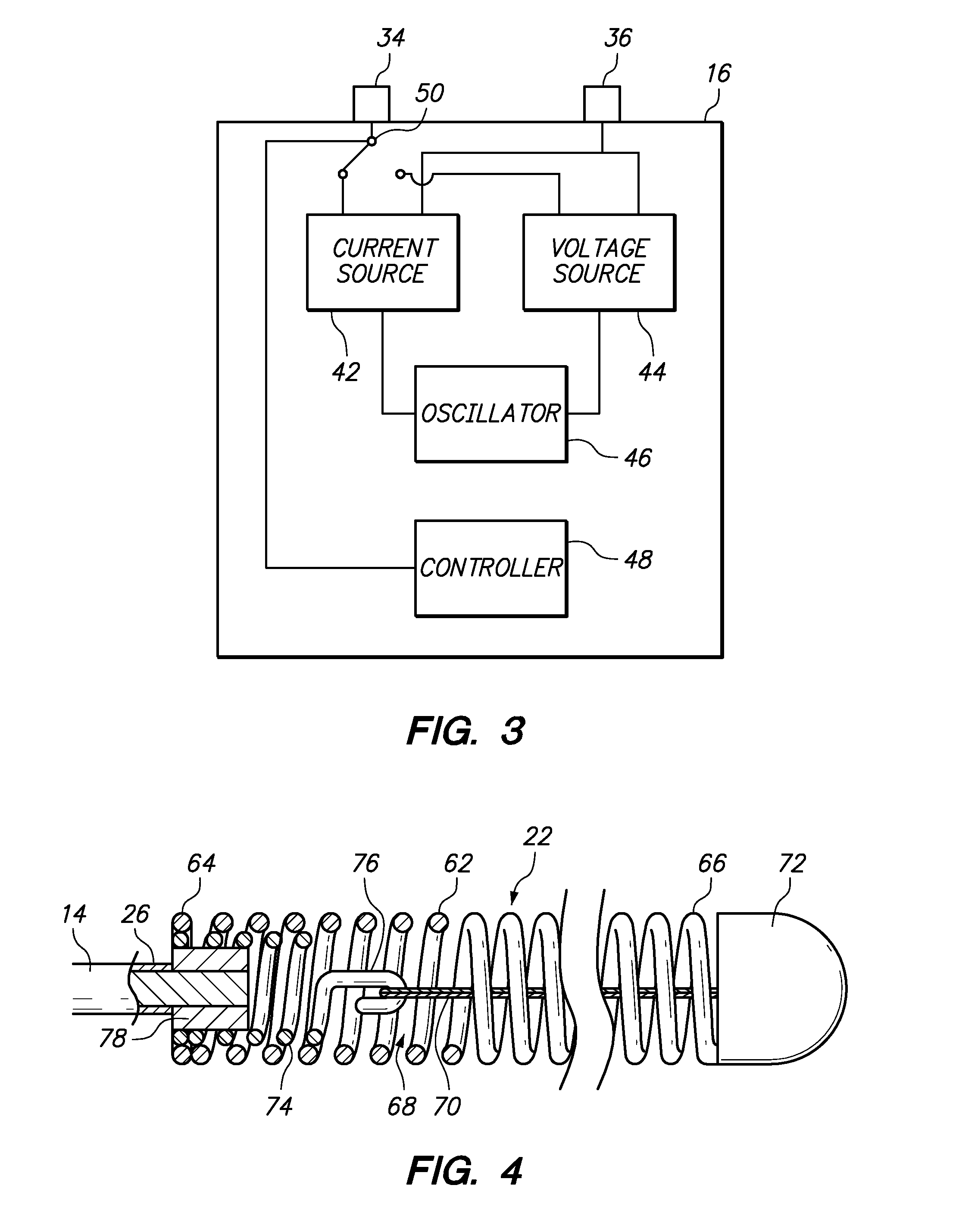Medical implant detachment systems and methods
a technology of detachment system and medical implant, which is applied in the field of medical implant detachment system and method, can solve the problems of significant morbidity or mortality, increased detachment time, and increased detachment time, so as to reduce the effective distance, reduce the detachment time, and increase the reliability and repeatability of the detachment process.
- Summary
- Abstract
- Description
- Claims
- Application Information
AI Technical Summary
Benefits of technology
Problems solved by technology
Method used
Image
Examples
Embodiment Construction
[0058]Referring generally to FIGS. 1 and 2, a medical system 10 constructed in accordance with one embodiment of the present inventions will be described. The medical system 10 is used in vascular and neurovascular indications, and particularly in the treatment of aneurysms, such as cerebral aneurysms. The medical system 10 utilizes an electrolytic detachment means to deploy vaso-occlusive devices, such as helical coils, within an aneurysm. Alternatively, the medical system 10 can be utilized to deploy implantable devices other than vaso-occlusive devices. For example, the medical system can alternatively be used to deploy stents and vena cava filters, which are described in further detail in U.S. Pat. No. 6,468,266, which is expressly incorporated herein by reference.
[0059]To this end, the medical system 10 generally comprises a delivery catheter 12 that can be intravenously introduced within a patient to access a target site within the vasculature, an implant assembly 14 that can ...
PUM
 Login to View More
Login to View More Abstract
Description
Claims
Application Information
 Login to View More
Login to View More - R&D
- Intellectual Property
- Life Sciences
- Materials
- Tech Scout
- Unparalleled Data Quality
- Higher Quality Content
- 60% Fewer Hallucinations
Browse by: Latest US Patents, China's latest patents, Technical Efficacy Thesaurus, Application Domain, Technology Topic, Popular Technical Reports.
© 2025 PatSnap. All rights reserved.Legal|Privacy policy|Modern Slavery Act Transparency Statement|Sitemap|About US| Contact US: help@patsnap.com



